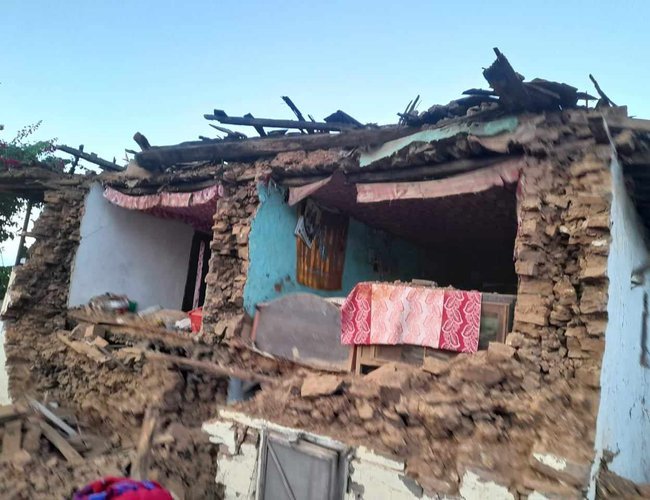
United Nations agencies have been providing temporary shelter, food, and non-food items as part of a comprehensive and urgent response to the pressing needs of the communities affected by the earthquake of November 3.
In a statement issued on Monday, the United Nations Nepal Office stated that despite geographical remoteness and a difficult operating environment, the UN agencies and humanitarian partners are on the ground supporting the government’s efforts by reaching out to around 3,000 households with food, shelter, WASH, protection, and health support.
“Days after 153 people were killed and several hundred injured, another strong earthquake with 5.6 magnitude struck Nepal on November 6, 2023,” it said.
Following the initial assessment of the remote damage assessment of available secondary data satellite images USGS data and earthquake risk model, around 1.3 million people might have been exposed and about 0.25 million people may need humanitarian assistance within 72 hours of the earthquake, it said.
Quoting UN Resident Coordinator and Humanitarian Coordinator, Hanaa Singer-Hamdy, the statement read, “The government has immediately responded very effectively with search and rescue operation.”
“More than 382 aftershocks were reported forcing people to spend nights in the open or makeshift shelters in freezing overnight temperatures.
The impact of this latest earthquake is compounding the difficulties and vulnerabilities of communities with low socio-economic indicators and stretched coping mechanisms.”
According to the UN Nepal Office, the World Food Programme (WFP) is providing logistics support to the government and humanitarian partners through the Humanitarian Staging Area, as well as has rapidly dispatched six metric tonnes of ready-to-eat emergency food to the affected areas.
Likewise, the World Health Organisation (WHO) is supporting local and national authorities to respond to the health needs of the affected population and has deployed two basic modules of the interagency emergency health kits to provide crucial aid.
UNICEF is dispatching critical emergency supplies to the affected areas and supporting response efforts to reach the most vulnerable children and families.
“As of 5 November morning, UNICEF distributed 1,067 sets of tarpaulins and 1,300 pieces of blankets to the affected population, with additional sets dispatched (3000). To avoid disease outbreaks, UNICEF is providing Water Sanitation and Hygiene supplies consisting of hygiene kits--bucket, mugs, water purifier (Piyush) and temporary toilets for the displaced populations in the two most affected districts,” read the statement.
Likewise, the United Nations Population Fund (UNFPA) has deployed medical supplies and other supplies for women and girls to ensure that their basic sanitation, menstrual hygiene and sexual and reproductive health needs are met in the midst of the disaster.
UNDP has committed resources for early recovery, including deploying human resources to the Provincial Emergency Operation Centre for vital information management.
“Preparations are underway for the use of drones to assess earthquake damage and deployment of structural engineers and volunteers for assessing damaged structures,” the statement read.
UN Women is gearing up to provide essential supplies for women and children, thermos units, water purification equipment and support for pregnant women while IOM is providing collaborative assistance to the Provincial Government for response and has deployed human resources to support the Provincial Emergency Operation Centre with information management.
Shelter and NFIs are planned to be distributed to support the displaced population in close coordination with federal and provincial ministries and local levels, read the statement.
The UN has emphasised the importance of a unified and rapid response to alleviate the suffering caused by the crisis.
- The Sentiment Of Monetary Policy Seems Focused On Increasing Eemand: FNCCI President Chandra Prasad Dhakal
- Jul 26, 2024
- Monetary Policy 081/82 Is Making The Economy More Dynamic: Governor Adhikari
- Jul 26, 2024
- Global IME Bank And Shashila Motors Signed Agreement Regarding Electric Vehicle loan
- Jul 26, 2024
- Lok Bahadur Thapa, permanent representative of the UN in New York, was appointed as the Vice President of ECOSOC
- Jul 26, 2024
- Leeladevi Gadtaula Became The First woman Chief Secretary
- Jul 26, 2024
















